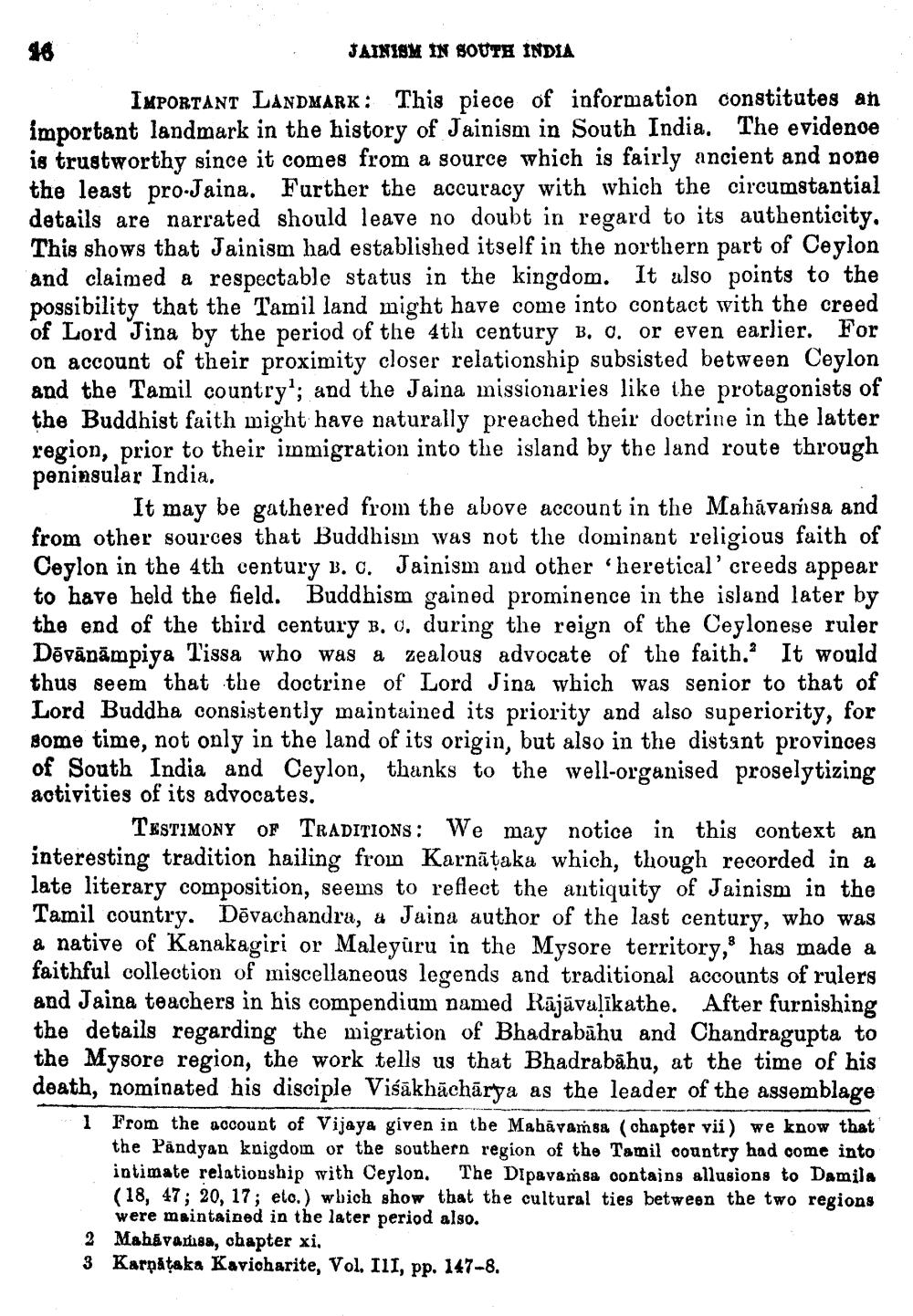________________
98
JAINISM IN SOUTH INDIA
IMPORTANT LANDMARK: This piece of information constitutes an important landmark in the history of Jainism in South India. The evidenoe is trustworthy since it comes from a source which is fairly ancient and none the least pro-Jaina. Further the accuracy with which the circumstantial details are narrated should leave no doubt in regard to its authenticity, This shows that Jainism had established itself in the northern part of Ceylon and claimed a respectable status in the kingdom. It also points to the possibility that the Tamil land might have come into contact with the creed of Lord Jina by the period of the 4th century B. o. or even earlier. For on account of their proximity closer relationship subsisted between Ceylon and the Tamil country'; and the Jaina missionaries like the protagonists of the Buddhist faith might have naturally preached their doctrine in the latter region, prior to their immigration into the island by the land route through peninsular India.
It may be gathered from the above account in the Mahávansa and from other sources that Buddhism was not the dominant religious faith of Ceylon in the 4th century B.C. Jainism and other 'heretical' creeds appear to have held the field. Buddhism gained prominence in the island later by the end of the third century B. O, during the reign of the Ceylonese ruler Dāvānāmpiya Tissa who was a zealous advocate of the faith. It would thus seem that the doctrine of Lord Jina which was senior to that of Lord Buddha consistently maintained its priority and also superiority, for some time, not only in the land of its origin, but also in the distant provinces of South India and Ceylon, thanks to the well-organised proselytizing activities of its advocates.
TESTIMONY OF TRADITIONS: We may notice in this context an interesting tradition hailing from Karnāṭaka which, though recorded in a late literary composition, seems to reflect the antiquity of Jainism in the Tamil country. Dēvachandra, a Jaina author of the last century, who was a native of Kanakagiri or Maleyuru in the Mysore territory, has made a faithful collection of miscellaneous legends and traditional accounts of rulers and Jaina teachers in his compendium named Rājāvalikathe. After furnishing the details regarding the migration of Bhadrabāhu and Chandragupta to the Mysore region, the work tells us that Bhadrabāhu, at the time of his death, nominated his disciple Viśākhāchārya as the leader of the assemblage
1 From the account of Vijaya given in the Mahavamsa (chapter vii) we know that
the Pandyan knigdom or the southern region of the Tamil country had come into intimate relationship with Ceylon. The Dipavansa contains allusions to Damila (18, 47; 20, 17; etc.) which show that the cultural ties between the two regions
were maintained in the later period also. 2 Mahávamisa, chapter xi, 3 Karpátaka Kavicharite, Vol. III, pp. 147-8.




